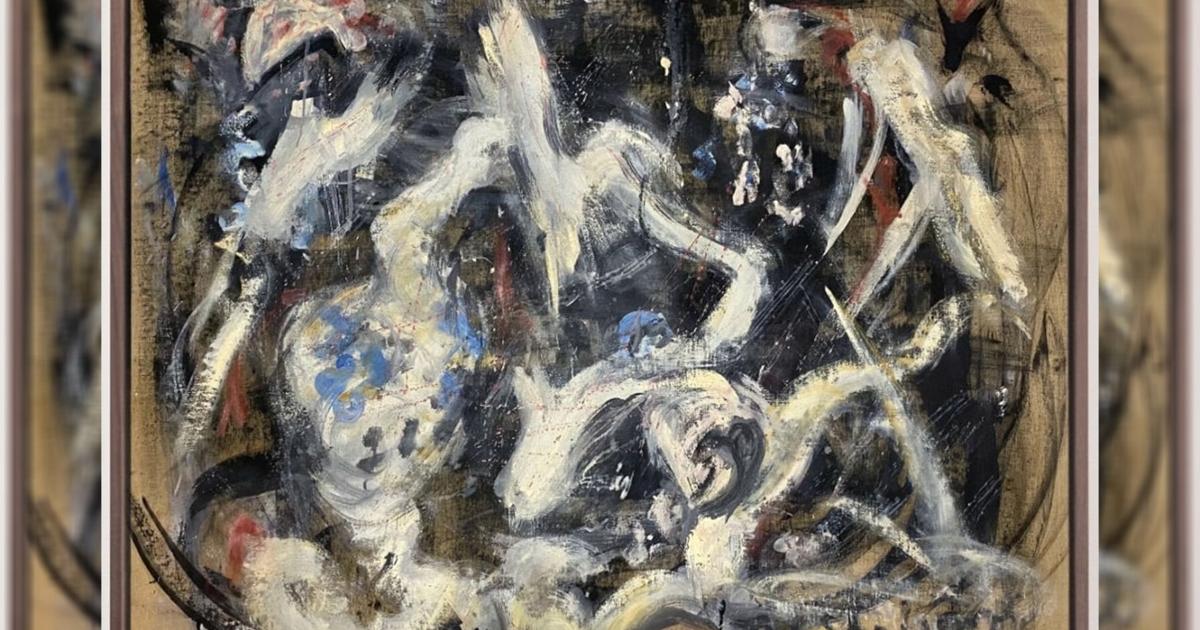
On San Francisco’s Beach Street, inside the women-owned COL Gallery, “Built on the Backs of Women” foregrounds fundamental female artists who pioneered ideas and practices later attributed to men. Meeting with curator Kelly Cahn and COL’s founder Callie Jones on the morning of the exhibit’s opening, they explained how common misappropriation is for women in the art industry. In defiance, “Built on the Backs of Women” challenges patriarchal practices, rewrites art history narratives and gives four women their due.
One featured painter, Ukraine-born Janet Sobel, demonstrated ingenuity in her unusual choice of materials and self-invented automatic techniques. In a profile by The Museum of Modern Art, Sobel recalled beginning her career with her son’s arts supplies, “painting on scraps of paper, the backs of envelopes, pieces of cardboard, and seashells found at the beach.” This kind of innovation aligns with the female art tradition Cahn and Jones believe in; one based on resilience and creativity. It also reflects how — as female artists are often excluded from the art world — the exhibit follows a long, necessary tradition of women forging their own spaces. Cahn and Jones emphasized that the women who did find places to share their art were then often given unequal recognition. Sobel showed much of her work in New York City, where in the 1940s, Jackson Pollock first noticed her distinct paint-dripping technique — a style he was credited for years later.
Another artist, Vivian Springford, made strides with her experimental stain techniques. Springford’s expansive 1983 work “Untitled VSF521” is, upon first glance, distinguished by its vibrant colors and dynamic composition. Looking closer, the stain formation recalls volcanic matter, a mixture of fire and air, possessing a certain combustive quality. Cahn and Jones highlighted Springford’s tendency to draw inspiration from her environment, with her vivid, captivating pieces embodying and abstracting organic structures. Still, Springford is widely overlooked in the history of color field painting, and her work only received critical acclaim after her passing.
Bernice Bing, a Chinese American queer artist, played a significant role in the Bay Area arts scene, though she received little credit during her lifetime for her impact on West Coast modernism. Bing’s displayed 1994 piece “Rebirth,” relatively modest in size, exhibits earthy tones and a free-flowing composition, in addition to her significant Chinese calligraphic influences. The painting represents the role of Eastern philosophies — Buddhism in particular — on her art. For Bing, cultural identity and abstract expressionism were intertwined.
Finally, Lynne Drexler, whose work is characterized by its vivacity and high saturation, spent most of her artistic career overshadowed by her husband John Hulberg. Drexler’s 1969 experimental landscape “Autumn Ground,” rich in color and texture, appears reminiscent of wide open fields and farm plains. Her abstraction of environment is unmistakable and stirring. Still, she only garnered significant critical recognition after her death.
Walking through the gallery, Cahn and Jones emphasized a subtle unifying thread across the exhibit: that evident in each piece is the artist’s search for wholeness. Whether exploring vast environmental implications or broaching cultural and sexual identity, each piece brims with vulnerability, honesty and care. In contrast, Cahn and Jones identify an association in the art world between austerity and legitimacy; audience and audibility; substance and gender. This association serves to perpetually obstruct women, critically separating technique from emotion. In direct opposition, “On the Backs of Women” honors those whose work exhibits the qualities that make art impactful and impressive. Bing, Drexler, Sobel and Springfield champion broadness of perspective, talent and emotion. Making rich and commendable contributions to the technical art tradition, they still managed to express something about feelings and life, demonstrating undeniable humanity — a feat contextualized by the knowledge that they were crucially overlooked and undervalued in their lived careers.
Although art may not be male-dominated in influences, it certainly is in its spaces. Galleries such as COL offer hope for a future art world in which life begets technique and female artists thrive, properly appreciated and in conversation with one another.
For those intrigued by abstraction or inspired by art-advocacy, “Built on the Backs of Women” is available for viewing in San Francisco until July 6.
